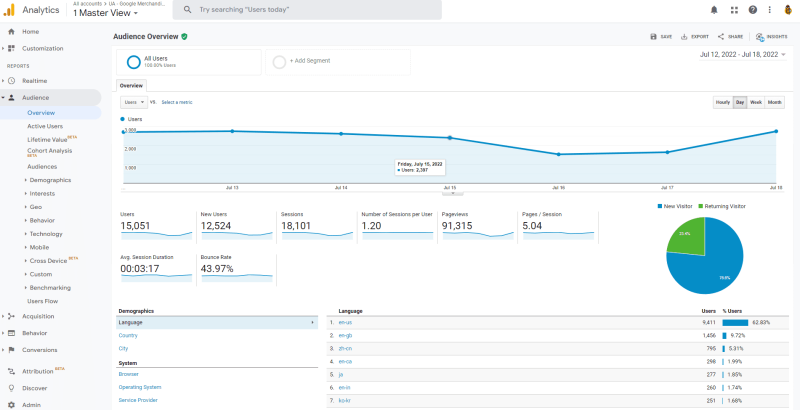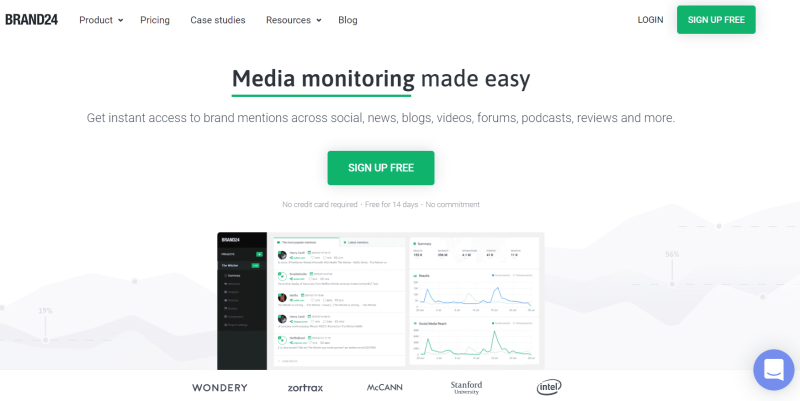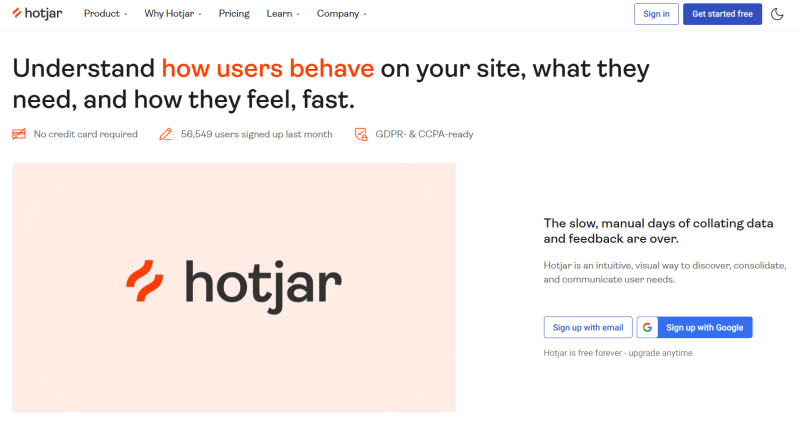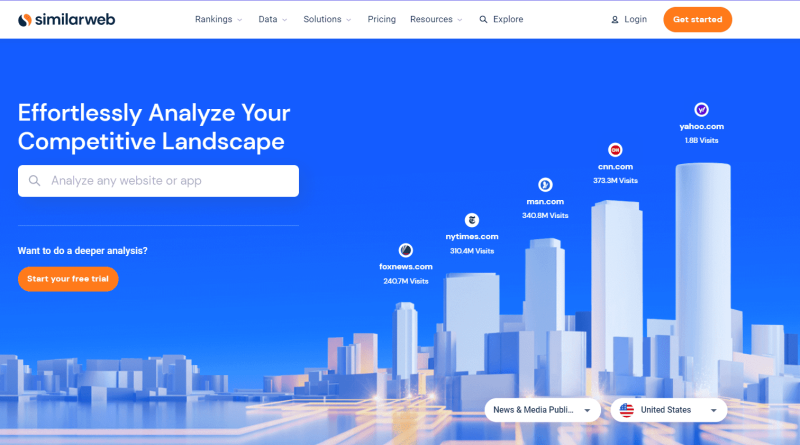E-commerce analytics tools allow your company to monitor the processes on your website. The market of analytics tools for e-commerce is broad hence the sellers may choose between more and less popular solutions and select between paid and free options. Analytics tools allow controlling different areas of business activity such as SEO, social media, customer service, and many more. The choice of the right solutions allows your company to run a comprehensive analysis of your e-commerce processes.
4 best e-commerce analytics tools – table of contents:
Google Analytics
The most popular tool for e-commerce analytics is Google Analytics. The program provides comprehensive information about the traffic on the website. While in the case of e-commerce, when there is an income from sales involved, the software provides even more analytics solutions. The owners of online stores have to dig deeper to find out, how their actions influence sales, what revenue is generated, and how many transactions is closed with purchase.
In Google Analytics there are e-commerce and transactional data available on the left side of navigating tab (Conversions -> E-commerce).
The E-commerce tab in Google Analytics provides us with the information about:
- transactional rates and coupons used
- new and returning customers
- customers’ behavior at the end of the purchasing process (to reveal the reason behind abandoned baskets)
- revenues generated by the particular products
- popularity of particular products
There is a lot of data that can be extracted with the use of Google Analytics for your e-commerce endeavor. Initially, the report has to be configurated to track transactions. How to configure the tracking of e-commerce in Google Analytics?
Firstly, install Google Analytics. Then, after the implementation of the tracking code move to the lower navigation tab, to “E-commerce settings” and switch one button in the “All website data” section.
After enabling the module in Google Analytics, another part of the code has to be added to the already installed pixel. After the process of tracking configuration, it is worth checking if everything works correctly by running the test of the transaction.
More advanced analytics options can be enabled in the Google Analytics system as well. Some functions allow enhanced reporting and connected product management. The great advantage of enhanced reporting is the ability to divide groups of users into segments, which allows analysis of users’ behavior.

Brand24
Brand 24 is one of the most known e-commerce analytics tools just after the Google Analytics. It is paid tool used for the Internet, mainly social media, monitoring. With this software, the company may quickly find and access discussions about their brand. Monitoring in real-time allows for fast reactions and decision-making.
The company has to know what is being said about its products and brand, being informed can protect the business from a potential crisis. The brand has to get access to valuable information about customers’ views and opinions. With this knowledge, the company can adjust the product to the client’s needs. Brand24 allows not only to monitor the discussions about the company but searching and tracking of key phrases.
With this tool marketing department of the company can find the information that is necessary for promotional activities of the company by searching the comments and reviews of clients. For example, it is worth knowing, which of the products has the best reviews from the customers and allocating funds for advertising this product.
However, in contrast, the products that are not recommended by the clients, should not be advertised, but the company should concentrate on modifications of the products and eliminate mistakes.

Hotjar
Among many e-commerce analytics tools Hotjar is the tool that allows analysis of the website in terms of usability and optimization. The user may take advantage of features that show how the consumer’s movements in the online store. Analysis of the forms and heatmaps are used in this process.
Knowing the data allows the owner of the page to identify elements that are not user-friendly. With the data, the company can take measures to usability and the friendliness of the website. Additional functionality of the tools is the option that allows running questionnaires, in which our clients may point out the problems encountered on the site.
There are locations on the website that are viewed more frequently than others. The exact information about such places allows better distribution of elements on the page, where the most important information should be displayed. With such knowledge, we gain certainty that our message reaches the client.

Similar Web
Similar Web is a conversion analysis tool. It allows analysis of differences between the website and the sites that belong to our competitors. It facilitates tracking of the website’s data such as the number of visits, and the results of the effective activities.
The tools provide many valuable analytical data, among others: website traffic general data, internet users’ behavior, and localization of visits. The user of the software can download reports in PDF version and to browse websites ranks.

Summary
The market of e-commerce analytics tools is broad and it is hard to asses, which solutions are currently the best. Each online store owner should choose the best option for himself and his business taking into account his expectations and budget.
Read also: What is e-commerce and who are online shoppers?
If you like our content, join our busy bees community on Facebook, Twitter, LinkedIn, Instagram, YouTube, Pinterest.
Author: Martin Sparks
E-commerce enthusiasts which constantly digs around the internet in order to make sure he hasn’t missed any important information on the topic of starting and scaling profitable online stores.


















